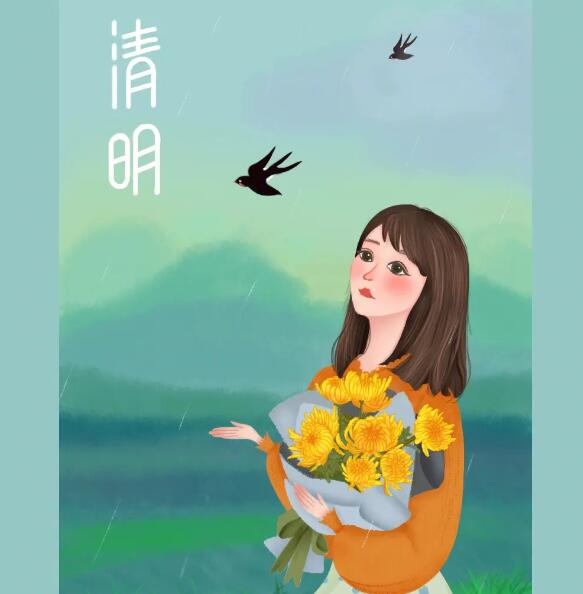春节习俗的英文介绍?
一、春节习俗的英文介绍?
放鞭炮: squibbing firecrackers贴春联: paste the New Year couplets吃年夜饭: take/have New Year"s Eve Dinner看春节晚会:watch Spring Festival Gala on TV发红包: hand out red envelopes(这个是原来我们老师说的,不知道对不对)买年货: special purchases for the Spring Festival ; do Spring Festival shopping 敬酒: propose a toast守岁: staying-up拜年: give New Year"s greetings; New Year"s visit吃汤圆: eat Tangyuan (Glutinous Rice Balls)灯会: exhibit of lanterns点灯笼: light lanterns
二、墨西哥的习俗英文介绍?
In Mexico, acquaintances usually greet each other with a hug and a kiss on the cheek. On solemn social occasions, men will kiss the hands of ladies in a gentle and elegant way.
三、英文介绍春节习俗?
大年初一:金鸡报晓
The first day of Chinese New Year, also known as the "day of chicken", officially begins at midnight.
午夜零点时分,人们正式跨入新年第一天,也叫"金鸡报晓"。
四、如何用中英文介绍春节的习俗?
What does the holiday mean?
这个节日有什么含义吗?
The term "pass year" is used for the Spring Festival (Chinese New Year). The word "Year" in Chinese characters used to mean a horrible beast. To combat the beast, the Chinese hang "good luck" wishes on red paper on the door and use fireworks in the belief that the beast fears red and fire. This tradition in many ways resemble the Western belief of using garlic and crosses to fight vampires。
中文中“过年”这个词组用以表示对春节(中国新年)的庆祝。“年”这个字在中文里是一种恐怖的怪兽。因为“年”害怕红色和火,所以中国人会在门上悬挂“春联”写上美好祝福,并放鞭炮来赶跑它。这个传统有点类似西方人用大蒜和十字架吓跑吸血鬼的传统。
Why New Year is so special?
为什么新年那么特别呢?
The Chinese zodiac features 12 animals in the sequence of Rat, Ox, Tiger, Rabbit, Dragon, Snake, Horse, Sheep, Monkey, Rooster, Dog, and Pig. This year is the year of Tiger. Each animal represents a different "personality". According to legend, people held a conference with all the animals, informing them that they would pick the 12 to represent the zodiac. However, in spite of being fast, the cat was not picked as its then-close friend, the rat, did not wake it. This action sparked off a rivalry that continues till this day。
中国的十二生肖代表了十二种动物,他们的顺序是:鼠、牛、兔、龙、蛇、马、羊、猴、鸡、狗和猪。今年是虎年。每一种动物有他们自己的“性格”。根据传说,人们当初和动物们开了一个会,最先到会的动物们就可以进入十二生肖。而身为猫最好的朋友,老鼠却没有把猫叫醒去开会。因此,它们之间的战争一直持续到今天。
What do people do?
那人们在新年都干啥呢?
Eat, eat again, and then eat some more! As the old Chinese saying goes: food is everything。
吃、接着吃、再吃更多东西!就跟一句中国古话说的那样:食物即一切。
The tradition is to have different main courses everyday from the 1st day of the New Year to the 15th day of the New Year, from Jiao Zi (dumplings),noodles, spring rolls, sticky rice cakes, and Tang Yuan (stuffed rice balls). Besides culinary satisfaction, each food has a meaning as well: for instance, Jiao Zi looks like gold, implying a wealthy year ahead。
传统就是,从新年第一天开始直到正月十五,每天都要吃不同的主菜。从饺子、面条、春卷、年糕到汤圆。除了祭好五脏庙以外,每一种食物也有含义:比如饺子看起来就像金元宝,这意味来年的丰衣足食。
Besides eating, young people visit older family members and kids are blessed with a red pack of "lucky" money. And then, people gather and eat again (!),leading to a lot of advertisements about fitness right after the Chinese New Year holiday.
除了吃以外,年轻人要去拜会家里的老人家,而小盆友们就有大把压岁钱拿。跟着,人们又聚在一起吃,所以节后中国就会出现很多减肥广告……
Happy Chinese New year!!!
春节快乐
五、关于“清明节”的英文介绍?
Qingming Festival originated from ancestor belief and spring sacrifice custom in ancient times. It has two connotations of nature and humanity. It is not only a natural solar point, but also a traditional festival. 清明节源自上古时代的祖先信仰与春祭礼俗,兼具自然与人文两大内涵,既是自然节气点,也是传统节日。 Qingming Festival is a traditional major spring festival. Tomb-sweeping and ancestor-remembering is a fine tradition of the Chinese nation since ancient times. 清明节是传统的重大春祭节日,扫墓祭祀、缅怀祖先,是中华民族自古以来的优良传统。
六、用英文介绍清明节?
中国清明节的英文介绍:
Brief introduction to the Qingming Festival:
The Qingming or Ching Ming Festival, also known as Tomb-Sweeping Day in English, is a traditional Chinese festival on the first day of the fifth solar term of the traditional Chinese lunisolar calendar. This makes it the 15th day after the Spring Equinox, either 4 or 5 April in a given year.
Qingming has been regularly observed as a statutory public holiday in China. It became a public holiday in China in 2008.
The holiday is associated with the consumption of qingtuan, green dumplings made of glutinous rice and barley grass.
Origin of the Qingming Festival:
The festival originated from the Cold Food Festival ("Hanshi Festival"), established by Chong"er, Duke Wen of Jin, during the Spring and Autumn period. The festival was a memorial for his retainer Jie Zitui,who had loyally followed him during his years of exile. Supposedly, heonce even cut meat from his own thigh to provide Chong"er with soup.Once Chong"er was enthroned as duke, however, Jie considered hisservices no longer required and resigned. Although Duke Wen was generousin rewarding those who had helped him in his time of need, he longpassed over Jie, who had moved into the forest with his mother. Duke Wenwent to the forest in 636 BCbut could not find them. He then ordered his men to set fire to theforest in order to force Jie out. When Jie and his mother were killedinstead, the duke was overcome with remorse and ordered three dayswithout fire to honor Jie"s memory. The city erected over the formerforest is still called Jiexiu (lit. "Jie"s rest").
The Qingming Festival in literature:
Qingming was frequently mentioned in Chinese literature. Among these, the most famous one is probably Du Mu"s poem (simply titled "Qingming"):
七、用英文介绍中国新年的习俗?
Spring Festival The Spring festival is the most important festival in China.It is on January 1st according to the Chinese lunar calendar.It"s China"s New year"s Day So usually a month before the festiva,people begin to buy food clothes and decorations for houses.
On New Year Eve,each family will gather together eating,talking and watching TV for almost the whole night.The children are the happiest of all because they can get presents from their parents or grand-parents.On Lunar New Year"s Day.pepole will eat dumplings.When they meet their neighbours or friends,they"ll say:”Happy New Year!”The New Year celebrating activitise will last about half a month.
八、清明节有哪些传统习俗,说说你的老家习俗?
清明节的文化习俗有祭祀扫墓、标祀、标墓、插柳、荡秋千、踏青、放风筝、蒸制蒿饼、吃青团子、吃馓子、采食螺蛳等。此外,中国南北各地在清明佳节时还有食鸡蛋、蛋糕、夹心饼、清明粽、清明粿、馍糍、清明粑、干粥等多种多样富有营养食品的习俗。我们就挑几个主要的习俗说说吧。 祭祀扫墓清明节是中华民族古老的节日,既是一个扫墓祭祖的肃穆节日,也是人们亲近自然、踏青游玩、享受春天乐趣的欢乐节日。 清明扫墓,即为“墓祭”,谓之对祖先的“思时之敬”,祭扫祖先是对先人的缅怀方式,其习俗由来久远。 清明节融汇自然节气与人文风俗为一体,是天时地利人和的合一,充分体现了中华民族先祖们追求“天、地、人”的和谐合一,讲究顺应天时地宜、遵循自然规律的思想。 南方很多地方在重阳、清明或冬至扫墓,如福建、广东、海南、广西、云南昆明等地方。祭祖除扫墓的"山头祭"外,后世还有祠堂祭,称为"庙祭",庙祭跟古代春礿之祭有着密切的关系,二者虽然在时间上相距遥远,血脉确实相通。庙祭是宗族的共同聚会。扫墓祭祖习俗在先秦以前就有了,由于古时南北风俗各异,有些地方扫墓不一定是在清明之际。唐代以前北方一些地区扫墓主要在寒食节与寒衣节,到唐宋后清明扫墓才开始在全国范围盛行,唐代是各地墓祭风俗融合时期,沿袭清明墓祭风俗,并扩大到全国各地。清明之祭主要祭祀祖先,表达祭祀者的孝道和对先人的思念之情,是礼敬祖先、慎终追远的一种文化传统。 清明节期很长,10日前和8日后皆可扫墓祭祀,有的地方甚至长达一月。 按照旧的习俗,扫墓时,人们要携带酒食果品、纸钱等物品到墓地,将食物供祭在亲人墓前,再将纸钱焚化,为坟墓培上新土,再折几根嫩绿的柳枝插在坟上,然后叩头行礼祭拜。 中华人民共和国民政部大力推动鲜花祭扫、网上祭扫、社区公祭方式,要求各地积极组织缅怀先烈、追忆历史的爱国主义和革命传统教育活动。大力倡导殡葬新观念、新风尚,引导群众破除封建迷信和丧葬陋俗,自觉进行殡葬习俗改革,不断探索文明的祭扫方式。插柳黄河流域、淮河流域、长江流域等地家家户户清明节这一天在门头上插柳、在屋檐下挂柳、妇女头上簪柳、男子身上佩柳、儿童吹柳管、墓前插柳挂纸钱。胡朴安《中华全国风俗志》记淮河岸边的寿春(今安徽寿县)岁时说清明日,家家门插新柳,俗意谓可祛疫鬼。《芜湖古今》记芜湖风俗时说,清明日“清晨,街市叫卖杨柳。家家折一枝绿柳蘸上清水插上门楣,妇女则结杨柳球戴在鬓边“。 踏青清明时节春光明媚、草木吐绿,正是人们春游的好时候。踏青又叫春游,古时叫探春、寻春等。清明节祭祖活动往往在郊外进行,人们把祭祖扫墓和郊游踏青结合起来,既追思先人,又健康身心,于是踏青成为清明节的习俗之一。
九、清明节的习俗?
一、祭祖扫墓
清明节是我国的传统四大祭祀节日之一,是祭祖和扫墓的日子。扫墓俗称上坟,在汉族和一些少数民族地区,人们按照当地的风俗习惯,带上水果食品、纸钱等物品来到墓地,将供品摆放在墓地前面,将纸钱焚化,为坟墓添一些新土,然后再在墓前磕头祭拜,就可以收拾供品打道回府了。
二、折柳赠别
杨柳是春天的标志,在春风中摇曳的杨柳,总能给人一种欣欣向荣、朝气蓬勃的感觉。自汉朝以来,人们就逐渐形成了折柳赠别的习俗,借此互祝平安,因“柳”与“留”谐音,所以也取恋恋不舍、尽情挽留之意。同时希望离别的亲友,到了他乡也如离枝的柳条,能够很快地生根发芽,随处存活,这些都寄托着对亲友的美好祝福之情。
三、荡秋千
清明节荡秋千的习俗由来已久,历史相对古老,最早叫做千秋,后来为了避免某些方面的忌讳,才改为秋千。最早的秋千一般都是以树枝为架,然后再拴上彩带。后来逐渐发展为用两根绳索加上踏板做成的秋千。荡秋千的习俗传承至今,深受人们喜爱,不仅能锻炼身体,也可以借此锻炼自己的勇气。
四、拔河
拔河的运动起源于春秋后期,开始是在军队中盛行,当时叫“牵钩”、“钩强”,后来流传到民间,到唐朝时期开始称为“拔河”。拔河就是人数相等的双方对拉一根比较粗的绳子,将对方拉出河界,就算获胜。唐玄宗时期曾经在清明节时期举行大型的拔河比赛,后来就逐渐演变成清明节的民间习俗了。
五、蹴鞠
蹴鞠是世界上最早的足球活动,起源于战国时代,蹴鞠就是指一种古老的皮球,球面是用皮革做成,里面用羽毛填充。蹴鞠运动是古代清明节时期人们非常喜爱的一种游戏,到了汉代,蹴鞠就已经成为一项非常专业化的运动。到了唐宋,蹴鞠的技术有了很大的提高,也成为一种大型活动,在宫廷内,经常有数百人参加。《水浒传》里的高俅,就是一位蹴鞠高手,正因为他球技高超,才深得宋徽宗赏识,一路平步青云。
六、踏青
踏青也称作春游,古时也叫探春、寻春等等。清明时节,春回大地,阳光明媚,万物复苏,人间处处是一片生机勃勃的景象,正是郊游踏青的大好时光。踏青的习俗由来已久,早在先秦时期就已经形成,到了宋代,踏青之风最为盛行,一直相传至今。
七、吃鸡蛋
清明节吃鸡蛋的习俗,也有几千年的历史了,古人将各种禽蛋如鸡蛋、鸭蛋、鸟蛋等煮熟后涂上各种颜色,称为“五彩蛋”,他们把这些五彩蛋投到河水里,顺水冲下,等在下游的人们就争先抢捞,认为吃了以后,就可以孕育生子。
后来人们在清明节时期吃鸡蛋,象征一家团圆,也有民间传说清明节吃了鸡蛋,一整年身体都会好,就如同端午节吃粽子、中秋节吃月饼一样,都是一种节日食品。
八、吃发糕
清明时节人们喜欢蒸发糕吃,发糕由黏米碾成米浆蒸熟做成,发糕重要的不少好吃不好吃,而是看蒸得够不够“发”、够不够“高”,用来寄托“发财”、“高升”的美好愿望。
九、吃青团
青团是江南一带的小吃,是清明节最有节日特色的食品。它是将一种清明节前后才有的艾草,打出汁拌进糯米粉里,然后做成团子,因为做出的团子呈碧绿色,所以取名青团。
十、儿女亲家互送麻糍
在浙江部分地区,至今还保留着儿女亲家互送麻糍的习俗。在古代,男女联姻后,往往还有很长一段时间才会正式嫁娶,也是为了便于双方互相考察,毕竟结婚是人生的大事。儿女亲家互送麻糍,就是在嫁娶前的一种礼仪,男方一般在清明节前给女方送去麻糍,意思就是下一个清明节前就要来迎娶新媳妇过门了。等女儿出嫁后,女方家的父母,又要在清明节前给男方家送去麻糍,意思是祝福小两口日子过得糯滋滋、甜丝丝,幸福美满。
十、清明节的习俗和春节的习俗?
清明节,又称踏青节、行清节、三月节、祭祖节等,节期在仲春与暮春之交。清明节源自上古时代的祖先信仰与春祭礼俗,是中华民族最隆重盛大的祭祖大节。清明节兼具自然与人文两大内涵,既是自然节气点,也是传统节日,扫墓祭祖与踏青郊游是清明节的两大礼俗主题,这两大传统礼俗主题在中国自古传承,至今不辍
春节是中华民族最古老、最隆重的节日,剪贴窗花、吃年夜饭、燃放爆竹、除夕守岁、舞龙舞狮、分发压岁钱……

